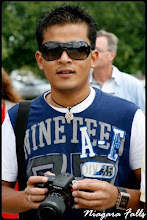

Thousands of contemporary photographers and photography-lovers know Fred Baldwin and Wendy Watriss as the high-energy couple who curate, organize and host FotoFest, the world’s best international photo festival and portfolio review that takes place every two years in Houston, Texas.
Fred and Wendy are also happy globe-trotters, constantly traveling around the world to participate in photography festivals, conferences and portfolio reviews — looking at new work, encouraging promising photographers, and helping to introduce like-minded people to each other wherever they go. They are highly-respected and well-loved by many, many people in the world of photography.
What comes as a pleasant surprise, however, is to discover the tremendous photographic output that the two have generated themselves, over the past 40 years, working individually and together as photographers, journalists and activists for human rights and social justice. A retrospective of several photographic series that they made in the United States is being shown for the first time at the large and wonderful new wing of Le Musée de la Photographie in Charleroi, Belgium.
Looking at the U.S. 1957-1986 is an extended look at cultural and political life in the United States over nearly three decades of change and stability. A book of the same title has been published to coincide with the exhibition.
The work on display touches on some of the most important historic events of the last half century in the U.S. — the Civil Rights Movement, Ku Klux Klan, Vietnam War, American drug culture, Feminism, and local and national politics, to name a few. They traveled with and photographed well-known figures from that era, including Martin Luther King Jr., John F. Kennedy and Robert Kennedy.
Beyond the big stories, they immersed themselves in local issues in various parts of the South. They documented rural life, poverty, and the struggles for survival and dignity in small communities throughout Texas over an extended period of 13 years of self-initiated investigations.
The photos are rich in humanity, and very quiet in drama. They are not typical news photographs. Instead, they reveal complex stories in a matter-of-fact way that is quite refreshing. Xavier Canonne, director of the museum in Charleroi who spear-headed this retrospective, writes in his introduction: "The subjects photographed in each area were not predefined by the photographers. Instead, they worked in concentric circles, discovering and recording moments of daily life, the evidences of social class, and the ceremonies – religious, scholarly,social and sportive – that shape collective existence and reflect its origins. Everything in this work has informative value: people’s dress, their hair, their food, their way of standing in front of the lens or ignoring it...”
In an excellent interview, Fred Baldwin and Wendy Watriss talk about lots of issues, and they speak articulately and passionately about their personal beliefs. When asked what lessons they learned from their long journey in Texas, Wendy replied:
In all these works, there is an understanding of the importance of history and the record of that history. We have a deep understanding of the depth of human struggle and the need to continually document, expand the memory of this struggle and move forward with it.
What is depicted in these works is still relevant to U.S. contemporary history. With the Civil Rights Movement, one of the young African American men who assisted Fred in working with the Civil Rights Movement in Savannah was the first black student to integrate Armstrong Junior College in Savannah. This man is now Mayor of Savannah. This story is very relevant to the current U.S. presidential election and what Barack Obama says he stands for.
The realities and results of the Vietnam War interconnect with much of what is happening to U.S. soldiers in the Iraq and Afghanistan wars – and certainly the official treatment of veterans’ health and psychological problems related to these wars and the first Gulf War. Once the visible combat wounds are treated, and hopefully, healed, current treatment of U.S. veterans is not dissimilar to what happened to U.S. veterans during and after the Vietnam War. This is especially true with post-traumatic stress syndrome problems, brain injuries, and immune system problems associated with the use of depleted uranium weaponry.
Certainly, the histories and ways of life we photographed in Texas 20-30 years ago continue to be relevant to contemporary political and social developments in Texas and the United States.
This exhibition, and the book, are important reminders of the power of photography (and personal activism) and how it can affect positive change, directly or indirectly. Anyone who is interested in the history of the United States, human rights, and documentary photography will find value in this work.
— Jim Casper
Looking at the U.S. 1957-1986January 24 to May 24, 2009
Looking at the U.S. 1957-1986January 24 to May 24, 2009
Photographs by
Wendy Watriss & Frederick C. Baldwin

0 comments:
Post a Comment